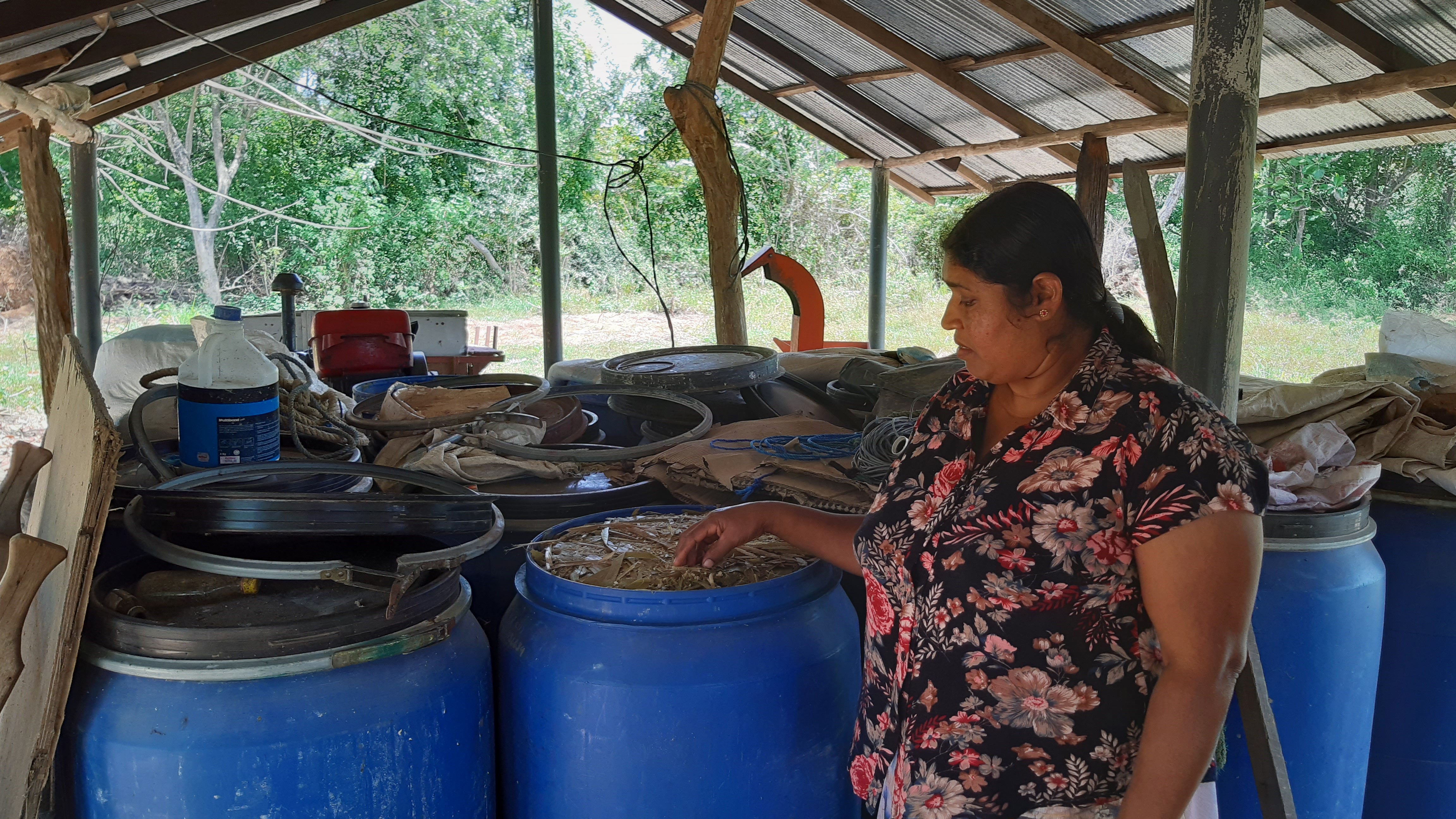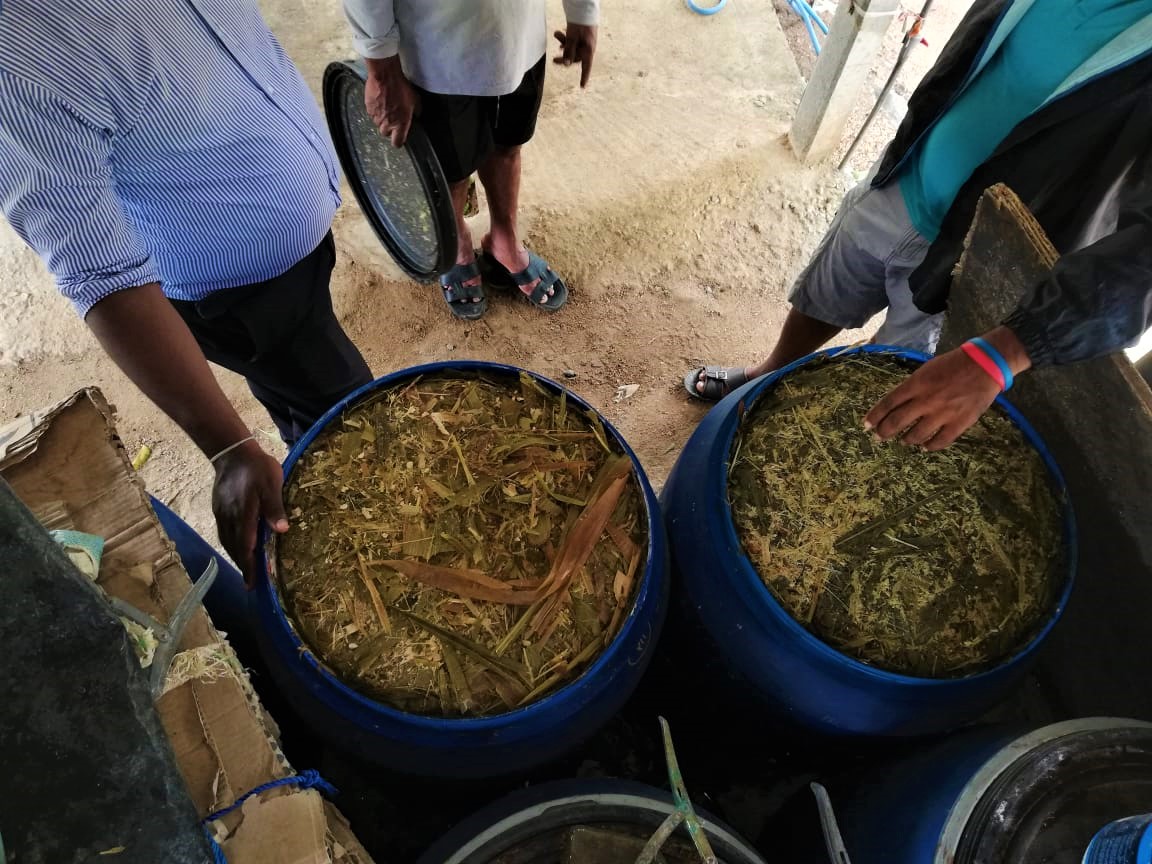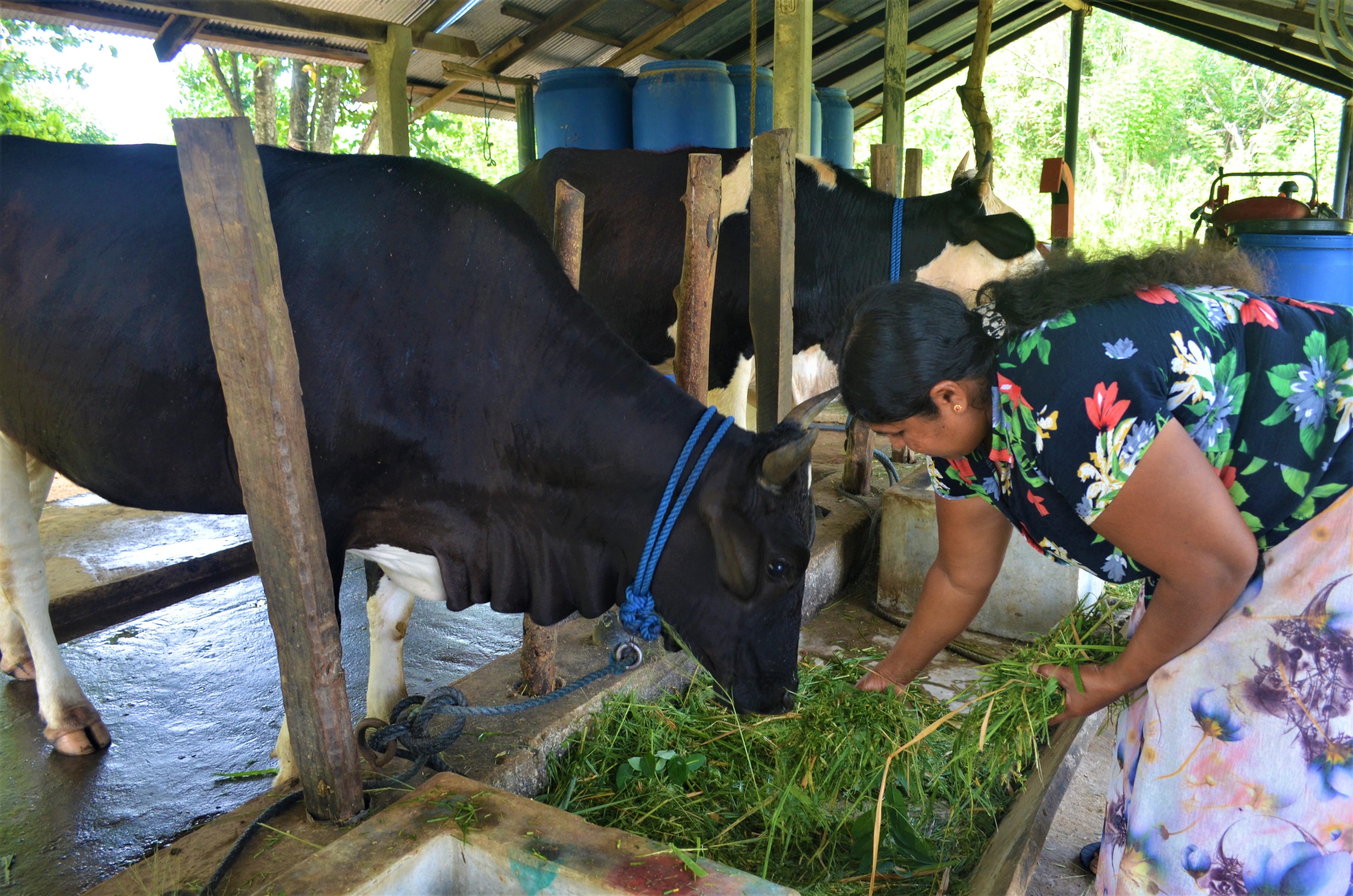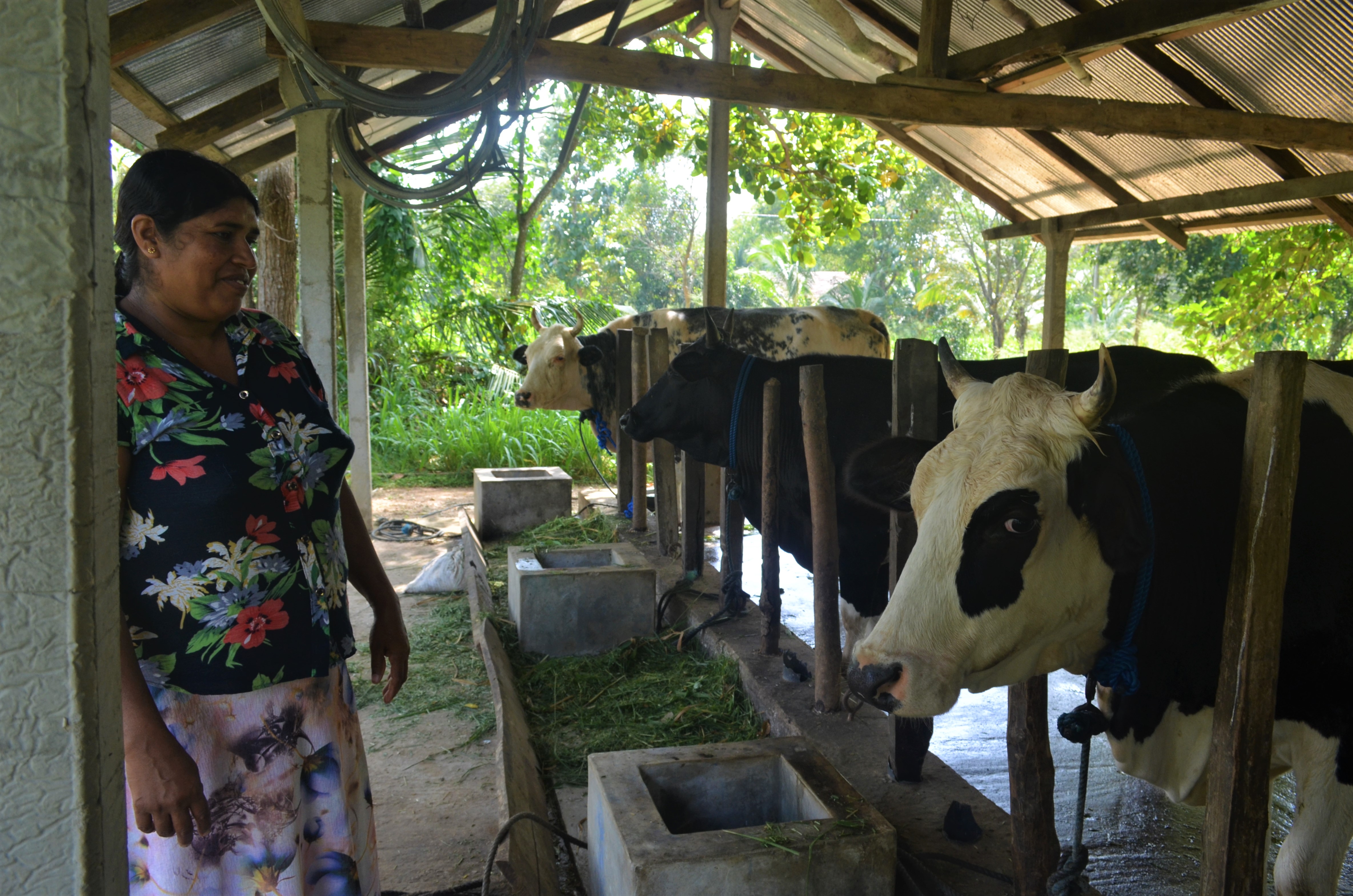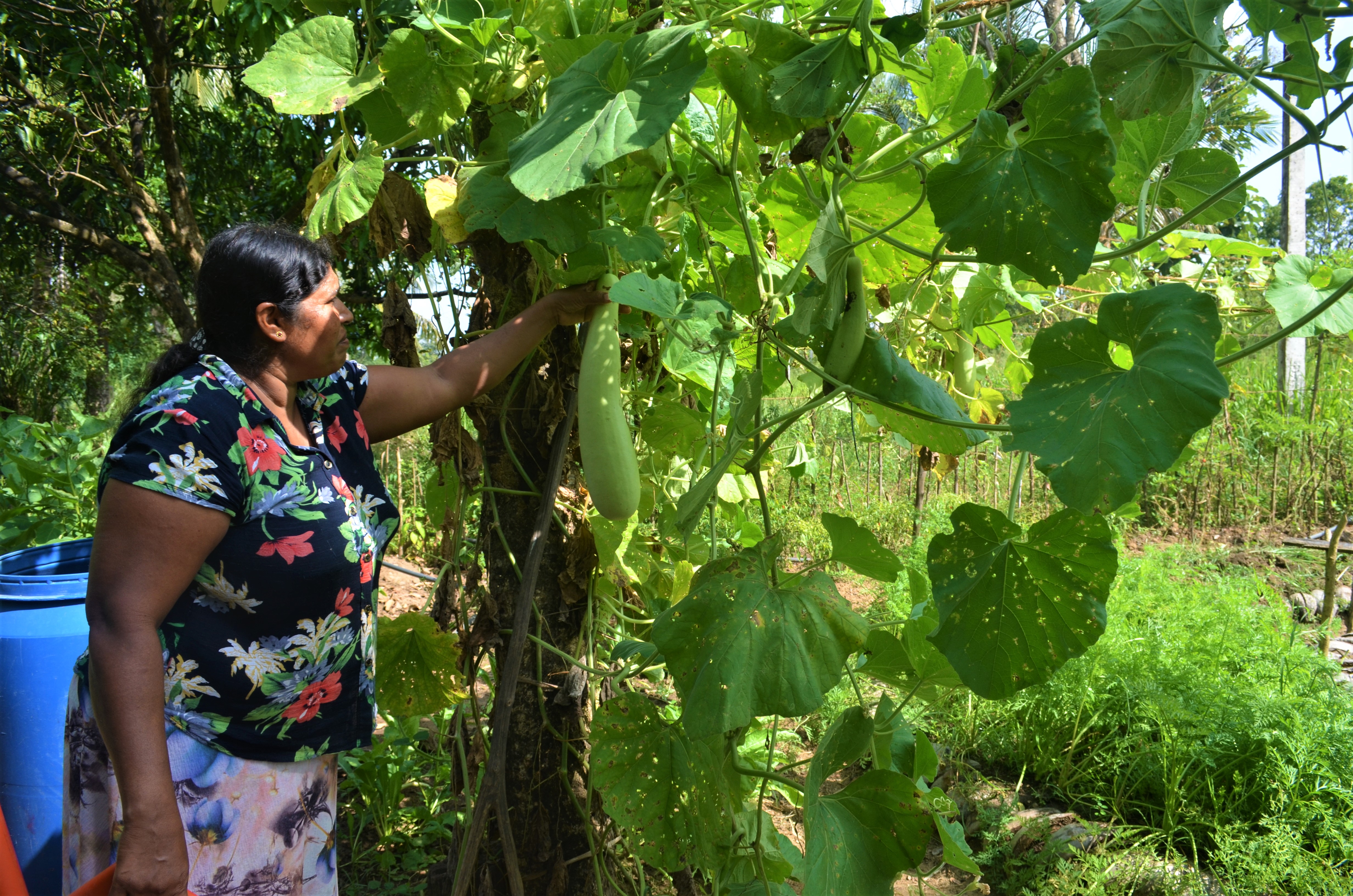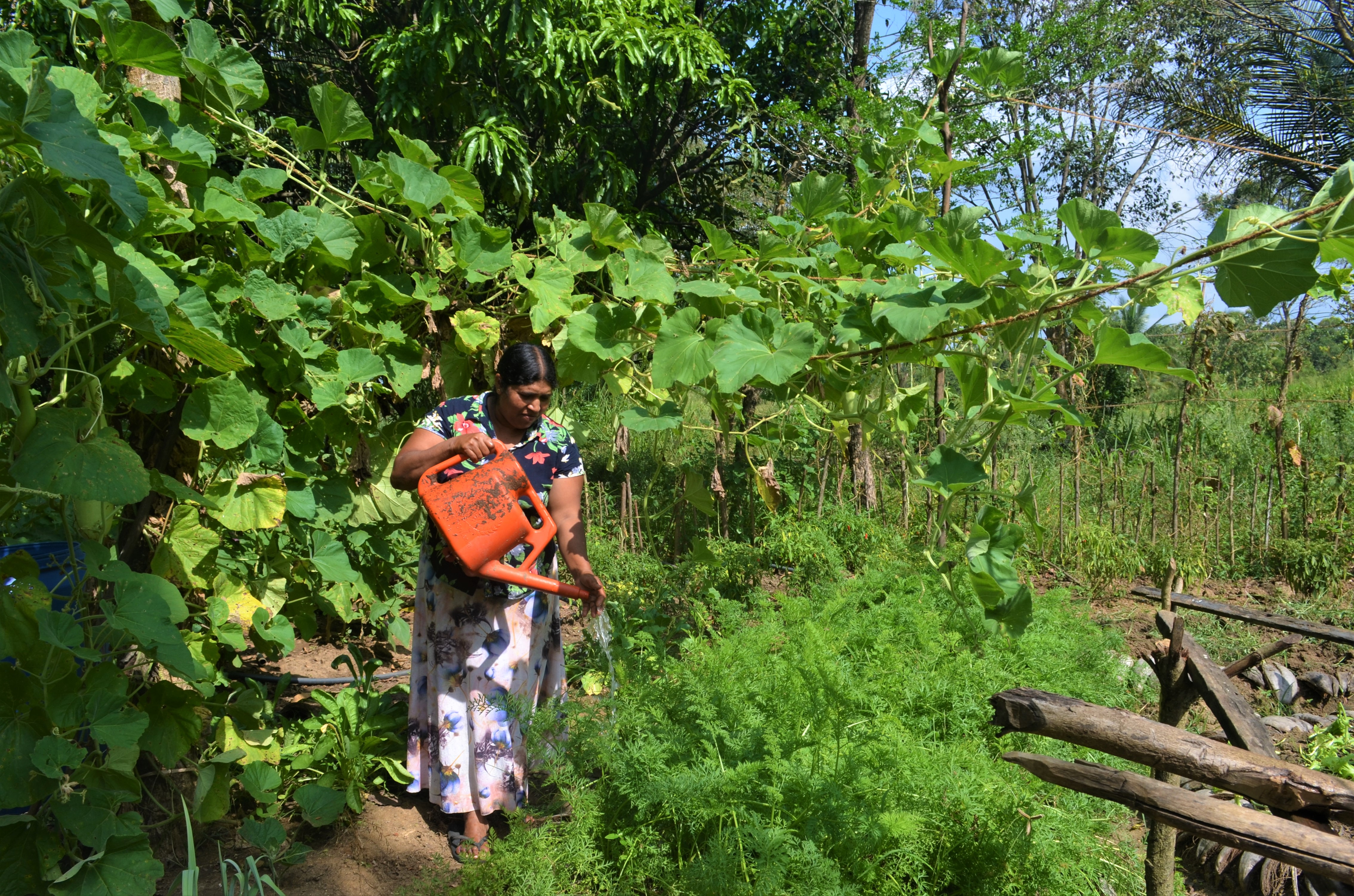Getting Climate Smart: Protecting Livelihoods from Weather Extremes Through Climate Smart Agriculture
By Sakshi Selvanathan and Ganga Kariyawasam
Lalitha Damayanthi Kumari is an enterprising female farmer. Living in the Vitharanagama village (in the Polpithigama Divisional Secretariat of Kurunegala), Lalitha engages in cattle rearing and home gardening in her homestead with the support of her family. These tasks are carried out in addition to the quotidian domestic responsibilities she has to fulfil as a housewife. Her husband works at the Sri Lanka Railways as a labourer and her son and daughter still attend school. As such, Lalitha decided to supplement her family’s income and nutrition by farming. And as intended, the family obtains additional income from selling fresh milk from their two cows, and also receive nutritious food from their home garden.
However, Lalitha – along with many dairy farmers in the dry zone – were faced with the almost-indomitable task of maintaining green fodder availability for cattle rearing all year round, especially during the dry season. Lalitha herself recalls her hardships: “I used to follow free gazing technique to feed my cows, but I was in big trouble during the dry season due to the lack of availability of fodder in the locality. Sometimes we went far to find fodder, which is a tiring and time-consuming task.”
In a similar vein, it proved challenging to send cattle to graze during the rainy season as well, due to unexpected heavy showers and also because the cows were prone to damaging the neighbouring farmers’ Maha season crops. Thus, all cattle farmers including Lalitha were compelled to cut and carry the fodder and feed the cattle at the shed.
It was in this dire situation when Lalitha was introduced to, and participated in, the awareness sessions on climate smart agriculture and livestock development conducted by the Climate Resilient Integrated Water Management Project (CRIWMP), or known as ‘Wew Gam Pubuduwa’ at the country level, in 2018. This bestowed her with the opportunity to join an exposure visit to an integrated livestock farm maintained by the Department of Animal Production and Health in Nikaweratiya, and to learn improved techniques for dairy farming. Later on, she also joined the training sessions organized by the same Project on improved techniques to overcome the main issues of dairy farming in the dry zone.
Lalitha was ecstatic with the results. “Through the awareness sessions, exposure visits and trainings, I got the chance to identify the shortcomings of my dairy farm unit, and I got sustainable solutions to my problems. The Project provided me with Sugargraze seeds to maintain fodder production in our land, trained us to preserve fodder and produce silage to use the whole year round”, Lalitha says with a contented smile. She adds: “I am a member of the dairy farmer group in our area and the project provided us with a grass-chopping machine for easy preparation of silage”. From then onwards, she was able to maintain a year-round feed supply of fresh fodder and silage for her cows.
In the same year, Lalitha became eligible to receive a cattle-shed from the aforementioned Department of Animal Production and Health, for which she had to only spend 50% of the cost by providing unskilled labour. As she did not have storage facilities for silage, she sold a portion of her Sugargraze harvest (of about 7000 kg for the price of Rs 7 per kg), and constructed a storage space. This complemented her small-scale dairy farm unit very well.
As a result of such applied innovations, Lalitha was able to use silage to feed her cows even when dry zone farmers had to go through a severe drought in the months of April to October 2019. And to her pleasant surprise, the adequate fodder and a continuous feed supply over the next three years resulted in increased milk production as well – from 10 liters per day from each cow to 20 liters in 2021. Now Lalitha owns five cows, including two milking cows, and earns around Rs 75,000 per month. Thus, she plans to buy a portable milking machine to make the milking process more efficient.
Lalitha was able to get a constant milk yield all year round through the implementation of on-farm strategies, improved fodder, and feed conservation. All this was possible even amidst experiencing extreme weather conditions brought about by climate change – which is testament to the fact that climate change adaptation is not some inconceivable fantasy.
In reality, Lalitha’s family is now able to conserve time as there is no need to search for fodder. Instead, she makes use of this spare time to develop her home garden, ensuring a constant supply of organic fruits and vegetables using cattle manure. Thus, her ingenious actions, propelled forth by the CRIWMP intervention, have paved the pathway to better nutrition and food security for herself and her family.
About the CRIWMP:
The Sri Lanka Red Cross Society (SLRCS) mobilizes farmer communities in the dry zone to adapt climate resilient agricultural activities, and is an implementing organization of CRIWMP – which is a 7-year project begun in 2017, aiming at strengthening the resilience of smallholder farmers in Sri Lanka’s Dry Zone to unpredictable climate and extreme events.
The Project is financed through a grant received from the Green Climate Fund (GCF) while the Government of Sri Lanka has committed to co-finance the activities identified under the Project as well. The Ministry of Irrigation is an implementing partner for this project, and technical assistance is lent by the United Nations Development Program (UNDP) as well. The SLRCS works with a number of government institutions to deliver the project activities and outputs while measuring its impact.
